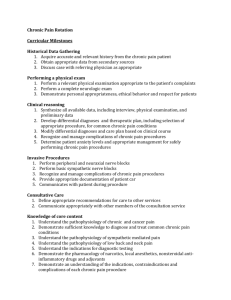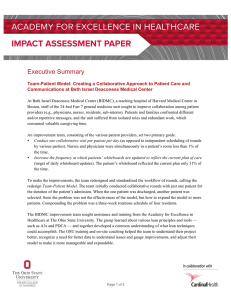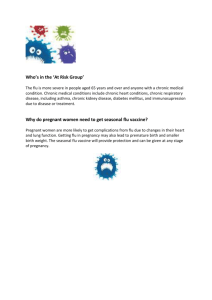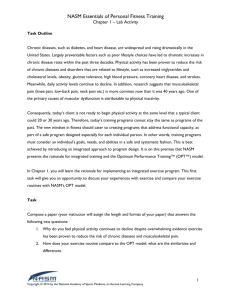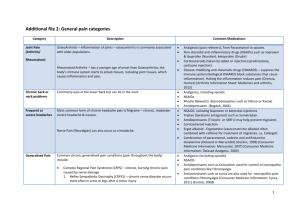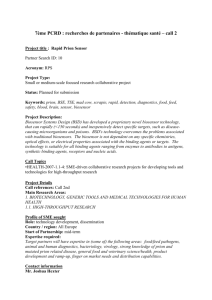Chronic Disease Management in Two Student
advertisement
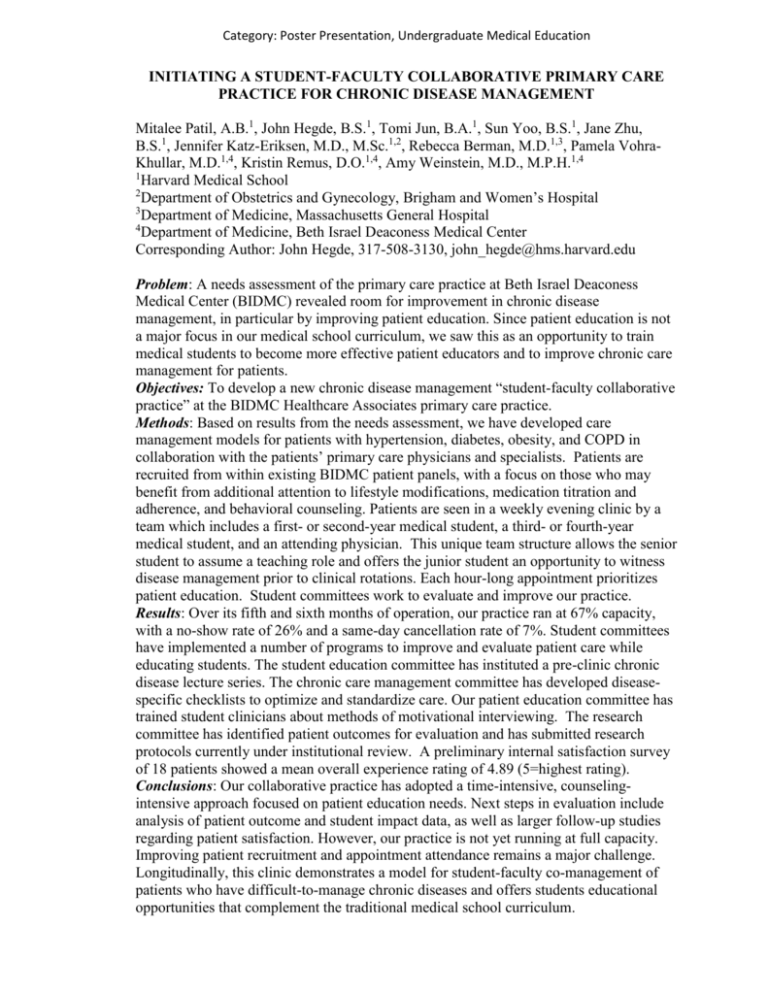
Category: Poster Presentation, Undergraduate Medical Education INITIATING A STUDENT-FACULTY COLLABORATIVE PRIMARY CARE PRACTICE FOR CHRONIC DISEASE MANAGEMENT Mitalee Patil, A.B.1, John Hegde, B.S.1, Tomi Jun, B.A.1, Sun Yoo, B.S.1, Jane Zhu, B.S.1, Jennifer Katz-Eriksen, M.D., M.Sc.1,2, Rebecca Berman, M.D.1,3, Pamela VohraKhullar, M.D.1,4, Kristin Remus, D.O.1,4, Amy Weinstein, M.D., M.P.H.1,4 1 Harvard Medical School 2 Department of Obstetrics and Gynecology, Brigham and Women’s Hospital 3 Department of Medicine, Massachusetts General Hospital 4 Department of Medicine, Beth Israel Deaconess Medical Center Corresponding Author: John Hegde, 317-508-3130, john_hegde@hms.harvard.edu Problem: A needs assessment of the primary care practice at Beth Israel Deaconess Medical Center (BIDMC) revealed room for improvement in chronic disease management, in particular by improving patient education. Since patient education is not a major focus in our medical school curriculum, we saw this as an opportunity to train medical students to become more effective patient educators and to improve chronic care management for patients. Objectives: To develop a new chronic disease management “student-faculty collaborative practice” at the BIDMC Healthcare Associates primary care practice. Methods: Based on results from the needs assessment, we have developed care management models for patients with hypertension, diabetes, obesity, and COPD in collaboration with the patients’ primary care physicians and specialists. Patients are recruited from within existing BIDMC patient panels, with a focus on those who may benefit from additional attention to lifestyle modifications, medication titration and adherence, and behavioral counseling. Patients are seen in a weekly evening clinic by a team which includes a first- or second-year medical student, a third- or fourth-year medical student, and an attending physician. This unique team structure allows the senior student to assume a teaching role and offers the junior student an opportunity to witness disease management prior to clinical rotations. Each hour-long appointment prioritizes patient education. Student committees work to evaluate and improve our practice. Results: Over its fifth and sixth months of operation, our practice ran at 67% capacity, with a no-show rate of 26% and a same-day cancellation rate of 7%. Student committees have implemented a number of programs to improve and evaluate patient care while educating students. The student education committee has instituted a pre-clinic chronic disease lecture series. The chronic care management committee has developed diseasespecific checklists to optimize and standardize care. Our patient education committee has trained student clinicians about methods of motivational interviewing. The research committee has identified patient outcomes for evaluation and has submitted research protocols currently under institutional review. A preliminary internal satisfaction survey of 18 patients showed a mean overall experience rating of 4.89 (5=highest rating). Conclusions: Our collaborative practice has adopted a time-intensive, counselingintensive approach focused on patient education needs. Next steps in evaluation include analysis of patient outcome and student impact data, as well as larger follow-up studies regarding patient satisfaction. However, our practice is not yet running at full capacity. Improving patient recruitment and appointment attendance remains a major challenge. Longitudinally, this clinic demonstrates a model for student-faculty co-management of patients who have difficult-to-manage chronic diseases and offers students educational opportunities that complement the traditional medical school curriculum.
